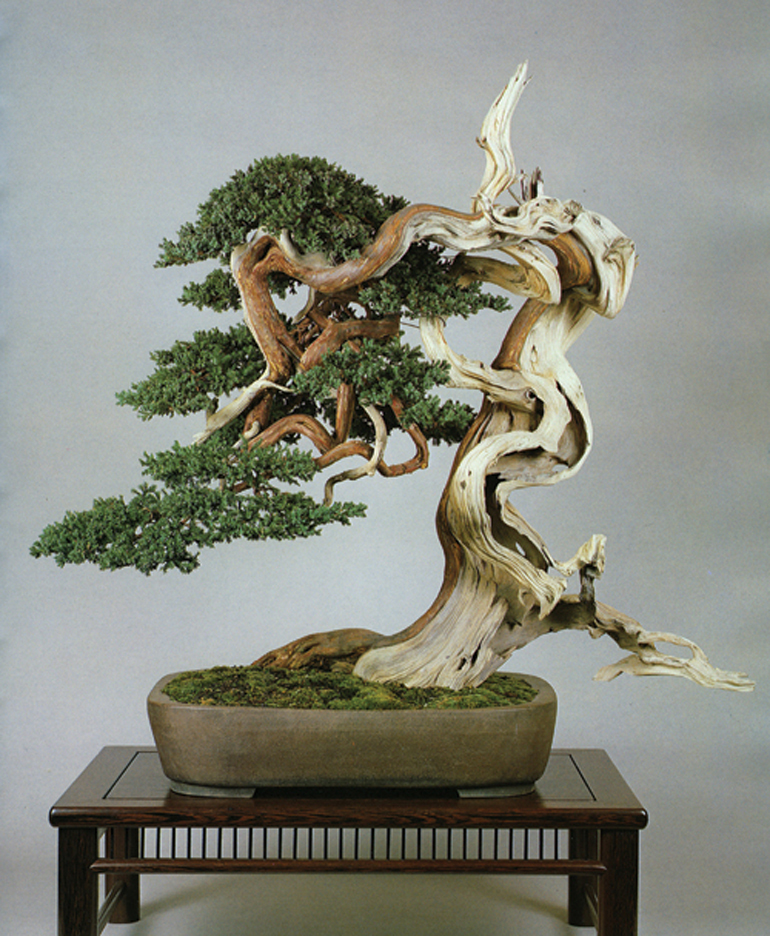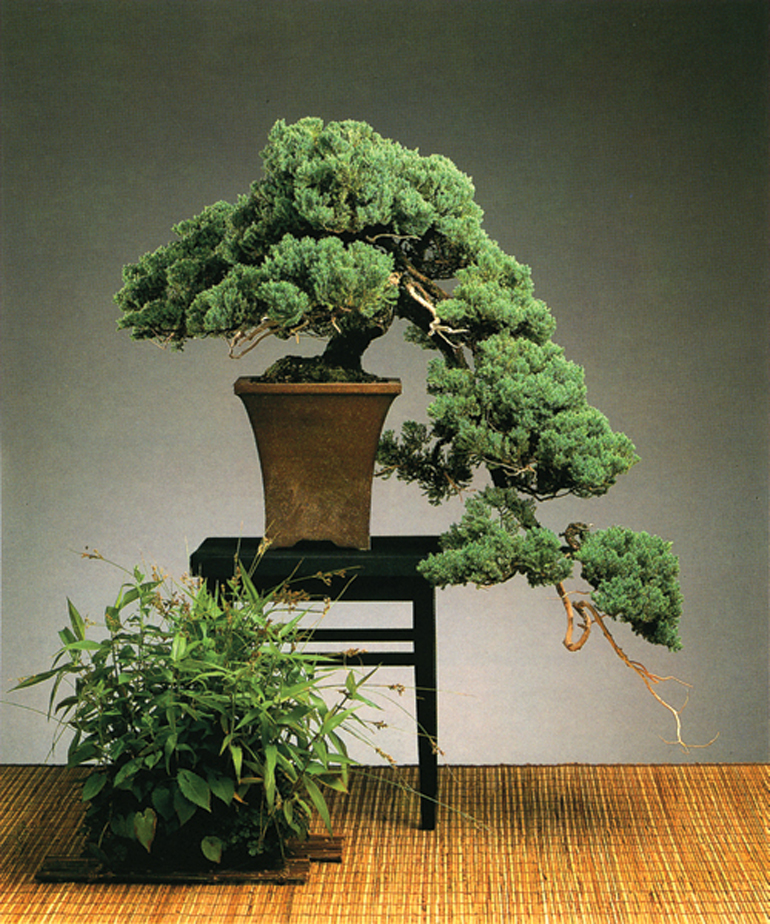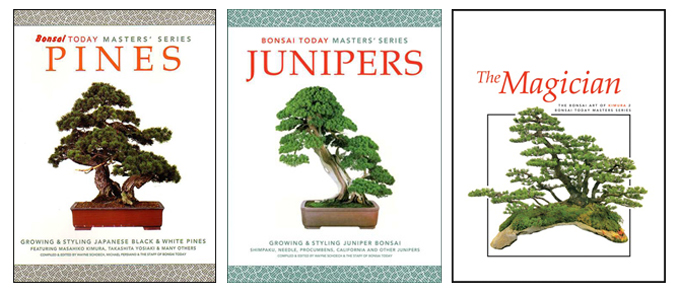
This wild masterpiece is a Shore Juniper (Juniperus procumbens) by famous bonsai innovator Masahiko Kimura. The photo is from our Juniper book.
This post originally appeared in January, 2010.
Junipers are tough, durable, flexible (they take to wire like they were made for it) and pruneable. They don’t mind having their roots heavily pruned and they take to container culture. Their needles tend to be small and dense and both their needles and bark come in a range of attractive colors and textures.
Perhaps best of all, junipers take to carving like few other plants; and their deadwood is both attractive and long lasting (all deadwood eventually rots, but juniper wood rots more slowly than most), especially if you keep it clean and apply lime sulfur.
Junipers grow almost everywhere in the northern hemisphere (they don’t occur south of the equator), from the Arctic tundra to the Central American mountains and African tropics. This means that there are varieties for almost any climate, including some that can survive indoors (only under just the right conditions, with the emphasis on survive, rather than on grow; as indoor cultivation is tough on most plants – but that’s a story for another time). All this makes junipers a first choice for bonsai, from beginners all the way to the masters.

Dwarf Japanese garden juniper (J. procumbens 'Nana'). By Jerald B. Stowell. Procumbens nana is a very popular variety for beginners, at least here in the States. However, you seldom see a masterpiece, as the trunks tend to stay fairly thin.
Three of our favorite books
Our Juniper Book is just back in print
The Magician is all about Masahiko Kimura
(that’s his tree at the top of the post)
and his phenomenal bonsai innovations
